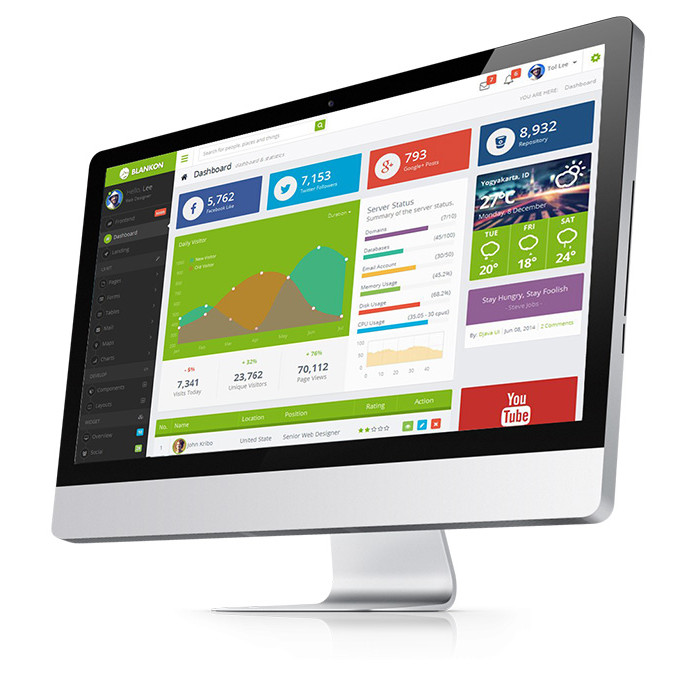Business-Solutions
Inventory Management
Overview
Inventory
Inventory system is one of the most comprehensive systems of NAMA; where inventory system provides detailed information about quantities, nature, and transactions for each item. You can define infinite number of warehouses that may contain infinite number of locations. NAMA provides all documents required for issuing, receipt, and transferring as well as the withdraw rules from warehouses and automatically generating for inventory documents, and many other capabilities supported by NAMA.
Features
Comprehensive record for each item
NAMA provides a huge information that defines specifications and setting for each item such as the capability of defining any number of units for the item along with allocating a default unit for both sales and purchases. You can also define allocated codes for the same item; where, at the level of each item, you can allocate a code for each customer or vendor so as to be the same code that defined in the of the customer’s invoices . NAMA supports defining a commercial policy for each item such as the capability of selling, purchasing, returning, and manufacturing; in addition to the storage policy such as the minimum quantity, maximum quantity, and order limit of the item. You can also define versions, sizes, colors, and many other information for each item.
Documents covering all stock activities
NAMA provides all documents that are required in the storage policy such as the documents of receiving, issuing, transferring, assembling, reserving, delivering, opening stock, cost re-evaluating, Initial receipt, stock receipt inspection, receipt additional cost, in addition to the requests documents for receipt, delivery, transfer, and others. All these documents are integrated with each other where so that you can issue a document based on another one logically such that
Automated coding for items
NAMA provides an automated coding system for items, where you can define the items characteristics in and let NAMA to generate the items codes in the items file including items name in intelligent way inspired from information entered before in the items category file.
Effective and powerful system for costing
Before implementing NAMA system, you can choose the costing method to be applied. NAMA implementers will guide you how to apply this method.
NAMA developers paid a great attention to costing process as it indicates how much profit or loss specially in manufacturing activities. You can adjust the average cost so as to be at the level of company, warehouse, location, department and section. The cost may be also at the level of item type such as batch no, size, version, and color in order to have an average cost for each item type. you can also generate “Additional receipt cost” documents to charge the item cost by any additional cost such as shipment cost, customs, taxes, or any additional expenses. These additional cost could be distributed manually or according to weight, quantity, ..etc. The cost of the free item could be defined by any costing way according to the enterprise’s perspective.
NAMA system does not wait for posting documents in order to calculate the items cost, as you don’t have to post document with NAMA. Rather the cost are calculated upon saving documents. NAMA also recalculates the items costs upon modifying or deleting any old documents or adding document by previous dates taking into account the documents arrangement and its affect on the average cost.
Furthermore, NAMA has variant methods to charge each item by the real cost; where you can generate Re-evaluate documents to change the item cost for any reason. NAMA also affects on the item cost upon changing the discounts of previous invoices and consequently re-evaluates the invoices discounts in order to automatically change items costs to reflect the new discounts.
Full system for assembly items
NAMA supports an effective and powerful system for assembling items components. You can assemble the same item by different methods according to the components to be assembled. NAMA provides a special file for components. For example, the processor as a component in the assembly item computer, you can define infinite number of processors such as Cor i3, Cor i3, Cor i3; consequently, when inserting the processor as a component in the computer, NAMA let the user to choose the required processor type. you can also define mandatory and optionally components for the assembly item in addition to determining quantity, size, color, version ,..etc while adding each component; consequently, each assembly item may have infinite number of assembly methods according to the assembled components. NAMA Allows user to generate assembly documents; where you can define the required quantities of assembly items to automatically generate issue documents for the components of these items with the parameters previously defined in assembly items. NAMA allows user to add additional expenses that required for assembling process.
Rules for generating inventory documents
With NAMA, you don’t have to define the inventory transaction cycle each time; rather, you can define infinite number of rules for generating inventory documents in order to be applied automatically according to specific parameters. For example, you can define a rule to generate a transfer document from a specific warehouse as soon as receiving items in this warehouse from another one according to the items quantities or items types. You can customize any rule according to the work nature.
Accurate stocktaking system
In addition to the perpetual inventory system that allows you to have instantaneously acknowledge about quantity, cost, and profit for each item, NAMA supports also an accurate system for stocktaking procedures. Initially, you define warehouses for which you will perform stocktaking and enter the actual quantities. NAMA calculates the differences between the actual quantities and the accounting quantities to generate the receipt, issue and accounting entry vouchers required to adjust the warehouses quantities. NAMA also simulates the actual conditions for stocktaking; where usually, users discover that there are some missing documents before stocktaking procedures, or there are incorrect data in some documents that will have a great effect in the inventory value. in these cases, you can create missing documents or modify incorrect documents and attach the result to changes to the ended stocktaking; consequently, affect in the inventory accounts, and quantities rather than having to re-perform all stocktaking procedures and suspend users again.
Tenders system
NAMA supports tenders system; where the company may have tenders with some customers; consequently the items may have prices for these customers different from prices defined system. For example, items included in the tender may be sold by 90 Riyals, while it may be sold by 100 Riyal out of the tender.
Applying quality standards
You can apply quality standards for received or issued items. this feature is very important, specially with manufacturing activities. Via checklists, you can test the items and then accept or reject these items. Quality tests could be performed via Quality control documents that are allocated to apply enterprise quality standards. NAMA also provides Quality assurance document to assure that all quality steps have been performed correctly.
فيديوهات عن تجميع الأصناف بنظام نماسوفت
تكاليف الأصناف بنظام نماسوفت
ملف الأصناف بنظام نماسوفت


